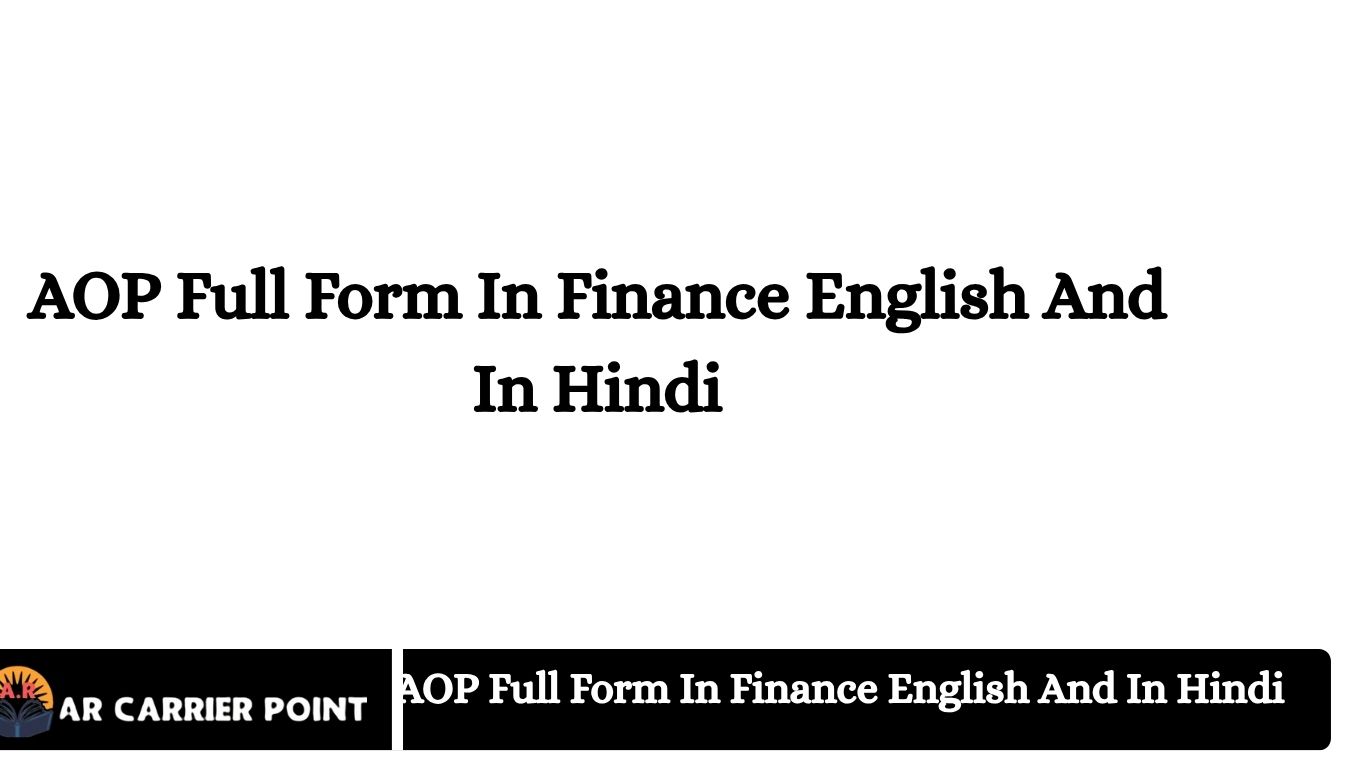AOP Full Form In Finance English
AOP stands for “Association of Persons” in the field of finance and taxation. It refers to a group of individuals or entities who come together for a common financial purpose, such as pooling resources or carrying out a business activity jointly. In taxation, an AOP is treated as a separate entity and is liable to pay tax on the income earned by the group, distinct from its members’ individual incomes. This concept is important in understanding how income is assessed and taxed when multiple persons collaborate financially, without forming a formal company or partnership. The term AOP helps tax authorities categorize and manage income from collective sources effectively.
AOP Full Form In Finance Hindi
वित्त और कराधान के क्षेत्र में AOP का अर्थ होता है “एसोसिएशन ऑफ पर्सन्स” यानी व्यक्तियों का समूह। यह उन लोगों या संस्थाओं का समूह होता है जो किसी सामान्य वित्तीय उद्देश्य के लिए एक साथ आते हैं, जैसे संसाधनों का साझा उपयोग करना या कोई व्यवसायिक गतिविधि मिलकर करना। कराधान में, AOP को एक स्वतंत्र इकाई माना जाता है और इस समूह द्वारा अर्जित आय पर टैक्स देना होता है, जो उसके सदस्यों की व्यक्तिगत आय से अलग होता है। यह अवधारणा उस स्थिति को समझने में मदद करती है जब कई लोग बिना किसी औपचारिक कंपनी या साझेदारी बनाए, मिलकर आर्थिक गतिविधि करते हैं। AOP टैक्स अधिकारियों के लिए सामूहिक आय का प्रबंधन आसान बनाता है।
Read More: AO Full Form In Income Tax English And In Hindi
Frequently Asked Questions
What does AOP mean in finance?
AOP stands for Association of Persons, which is a group of individuals or entities coming together for a common financial or business purpose.
Is an AOP considered a separate entity for tax purposes?
Yes, an AOP is treated as a separate taxable entity distinct from its members.
How is income from an AOP taxed?
The income earned by the AOP is taxed at the entity level, and members are taxed on their share of income depending on the distribution.
Can an AOP be formed without a formal partnership?
Yes, an AOP is generally formed without a formal partnership agreement and does not need to be registered as a company.
What are common examples of AOPs?
Examples include joint ventures, clubs, trusts, or groups pooling resources for a specific financial activity.
Does every member of an AOP have equal liability?
Liability depends on the terms under which the AOP is formed, but generally, members share responsibilities as per their agreement.
How is profit distribution handled in an AOP?
Profits are typically shared among members according to the agreement or their share in the association.
Is an AOP similar to a partnership?
While similar in some aspects, an AOP differs as it does not necessarily require a formal partnership deed and has different tax implications.
Conclusion
In finance and taxation, the concept of AOP (Association of Persons) plays a crucial role in recognizing groups of individuals or entities that come together for common financial activities without forming a formal company or partnership. Treated as a separate taxable entity, an AOP helps simplify the tax process on collective income, ensuring clarity in tax liability distribution among its members. Understanding AOP is important for proper financial planning and compliance with tax laws, especially when multiple parties collaborate financially.


